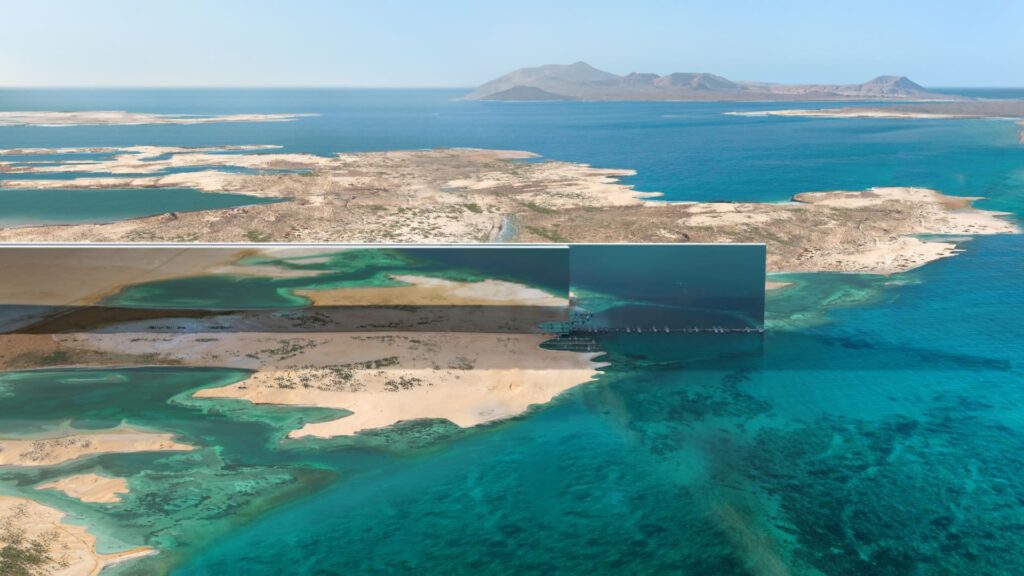Digital rendering of NEOM’s The Line project in Saudi Arabia
The Line, NEOM
When Saudi Arabia first announced plans to reinvent its oil-based economy, mega-infrastructure projects such as future region NEOM and smart city The Line were championed as central to the transformation.
However, nearly a decade after the launch of its Vision 2030 transformation strategy, Riyadh’s priorities have changed with the times.
Technology and artificial intelligence are currently key priorities for the Kingdom.
“We’re re-prioritizing a little bit of the sectors that need it the most, and today that’s technology, artificial intelligence,” Saudi Economy Minister Faisal Alibrahim told CNBC on Wednesday.
“We want to move to a productivity-driven economy, and productivity is centered around technology, innovation, and generative AI,” he told CNBC’s Dan Murphy on the sidelines of the Future Investment Initiative (FII) in Riyadh.

Riyadh’s Vision 2030 strategy to diversify its economy away from oil includes significant investments in tourism, cultural and sporting events, technology and infrastructure.
“Our main goal is non-oil growth, and non-oil growth has been steadily increasing, which is the main driver of our economic growth,” Alibrahim said, noting that non-oil activities currently account for 56% of Saudi Arabia’s total real GDP.
“All of our transformation efforts are about achieving non-oil growth, so that our economy no longer depends on a single commodity price or the size of government budgets, but also on the dynamism of the private sector and prepares us for the future.”
Alibrahim said that sectors such as tourism were doing much better than expected, and that the targets set for 2030 had been achieved several years ago, and that Saudi Arabia should raise its visitor target to 150 million by the end of the decade.
What about Neom?
A key pillar of the Vision 2030 program is the creation of NEOM, an urban development project centered around a future car-free, zero-carbon city called The Line.
The entire NEOM project is estimated to cost $1.5 trillion, and The Line is expected to cost about $500 billion, but Saudi Arabia has been trying to cut costs in recent years as its budget deficit widens due to falling oil prices.
Alibrahim said “agility” and the ability to change priorities and revise plans has become a key part of Vision 2030, noting that “the moments when these plans fail to achieve optimal results will require re-planning and adjustment.”
This shift in priorities has made the fields of technology, innovation, and artificial intelligence more important areas of focus.
Abdulela Albarak, a partner in government and public sector at Oliver Wyman, agreed that Saudi economic planning needs to keep up with changes in technology.

“Planning needs to remain agile and responsive to changes in evolving technology, emerging technologies that actually dictate change. It goes without saying that these mega-projects and mega-projects will have a significant economic and socio-economic impact in growing the country, promoting and nurturing new sectors, but the emergence of AI and other emerging trends also require a lot of focus,” he said.
People come here “to make money”
Alibrahim told CNBC that Saudi Arabia is now seen as a place of opportunity for investors as well as investment.
“People here have stopped coming to Saudi Arabia to get money. They are coming here to make money,” he said.
“Saudi Arabia has ceased to be just a source of capital and is also a capital of real economic opportunity,” he added. “We’re just unlocking potential.”
Construction of The Line project in NEOM, Saudi Arabia, October 2024
Giles Pendleton, NEOM line
In September, the Saudi Ministry of Finance estimated in a statement before the budget that the fiscal deficit in 2026 would be 3.3% of GDP, and said it was satisfied with that level.
“The government will continue to adopt expansionary spending policies that are countercyclical and geared towards national priorities with social and economic implications, contributing to achieving the goals of Saudi Vision 2030 and diversifying the economic base,” the ministry said in a statement.
It also predicted the economy would expand by 4.4% in 2025 and 4.6% in 2026, supported by growth in non-oil activities. On Wednesday, Alibrahim revised his 2025 forecast upwards, saying Saudi Arabia’s real GDP growth rate in 2025 will be 5.1%.
Saudi Arabia’s Finance Minister Mohammed al-Jadaan has downplayed concerns about the kingdom’s mounting debt (albeit relatively low at 32% of GDP) and growing deficit.
“The public debt-to-gross domestic product (GDP) ratio remains relatively low compared to many other countries, within a safe range relative to the size of the economy, and supported by fiscal reserves,” he said.
—CNBC’s Dan Murphy contributed reporting to this story.


